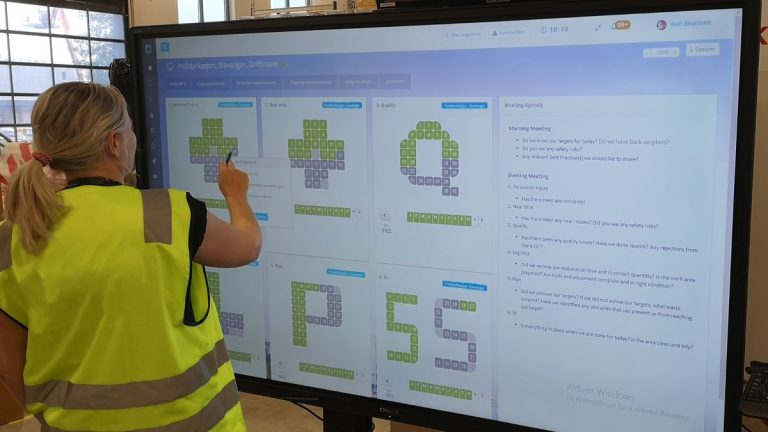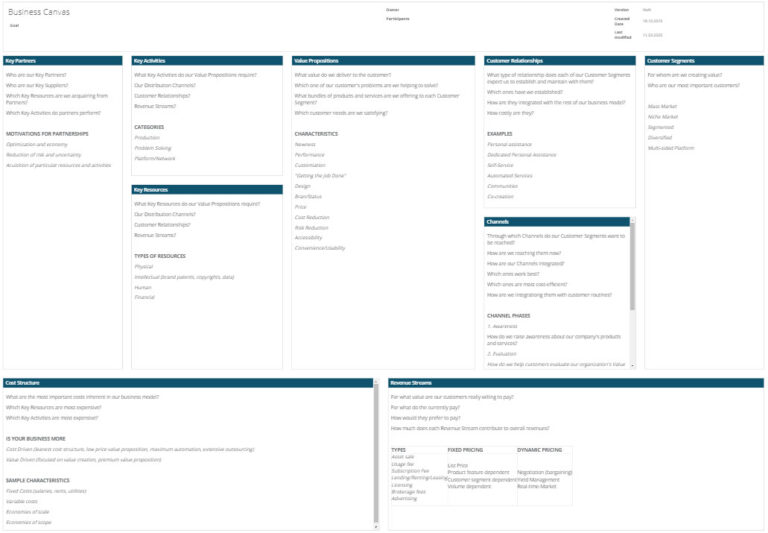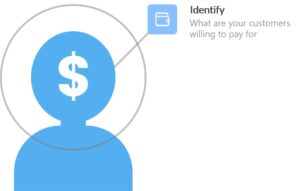- Product
Interactive boards. Fully customizable.
Capture, prioritize and follow up improvements.
Report and manage incidents. Visualize reports and statistics.
Operationalize your strategies and integrate your whole organization.
Access your tools in Microsoft Teams.
Customized templates. Problem solving, business development etc.
Manage project individually or in portfolios with visual and interactive tools.
Create and share best practices, one-point-lectures and standards.
Easy access to tasks, improvements and incidents.
Integrate DigiLEAN with your existing IT systems.
Meeting the demand of larger organizations.
High security level by default.
In less than 4 min
- Use Cases

Interactive tools for both shop floor and administration.
Visual project management.
Maintain standards. Manage incidents and discrepancies.
Manage tasks, integrate with problem-solving and continuous improvement.
Lean daily management tailored for healthcare.
Team task management, problem-solving and visualization.Case management, improvements, problem-solving, and strategy alignment.We have a LEAN solution for you too. Just ask!
We meet the demand of larger organizations.
- Pricing
- Blog
- Career
- Product
Interactive boards. Fully customizable.
Capture, prioritize and follow up improvements.
Report and manage incidents. Visualize reports and statistics.
Operationalize your strategies and integrate your whole organization.
Access your tools in Microsoft Teams.
Customized templates. Problem solving, business development etc.
Manage project individually or in portfolios with visual and interactive tools.
Create and share best practices, one-point-lectures and standards.
Easy access to tasks, improvements and incidents.
Integrate DigiLEAN with your existing IT systems.
Meeting the demand of larger organizations.
High security level by default.
In less than 4 min
- Use Cases

Interactive tools for both shop floor and administration.
Visual project management.
Maintain standards. Manage incidents and discrepancies.
Manage tasks, integrate with problem-solving and continuous improvement.
Lean daily management tailored for healthcare.
Team task management, problem-solving and visualization.Case management, improvements, problem-solving, and strategy alignment.We have a LEAN solution for you too. Just ask!
We meet the demand of larger organizations.
- Pricing
- Blog
- Career
Better decision making with a business model canvas
We give you the reason to start using a business model canvas in your decision processes. With a structured document, it helps you focus on the key elements of the decision, reduce risks and identify the true business potential. Presenting a business canvas to decision makers and stakeholders adds clarity and increase the chances of a go-ahead with the project.
When to use a business canvas
- Improvements that goes beyond regular kaizen events.
- Projects that requires investments with upper management approvals.
- Projects that introduce a new business model, process or revenue streams.
- Project with a commercial risk.
- Strategic alignment
Essentially, use the business model canvas whenever you need to document and support your decision process. In complex cases, many thoughts flow around in your mind and arguments contradict each other.
Making the best decision seems difficult and filled with unknown factors and increased risk. The most typical result is no decision at all. This leads to status quo and a missed opportunity of improvement, innovation and new business development. Rest assured that when you miss out on an opportunity, someone else is going to grab it.

Business model canvas structure
A business model canvas normally consist of 9 elements.
If this is familiar to you, skip the boring part, and jump straight to the point.

Value proposition

Start off by explaining your value proposition. This will be the initial guide for the business canvas and help define other key elements.
It may be the hardest part; identifying and be clear about the value you provide to your customers. If you can’t really get it right, try moving over to the customer segment section and identify your market.
The process of developing the canvas often results in adjustments, also in the initial idea and value proposition. You have to work with it as one integrated process.
Customer segments

A key part of new business development is to have a clear market definition and customer segmentation. This is defined by describing your market and segments with various attributes.
Example:
You are developing a new sorbet ice cream to supplement your ice cream product range.
Your current customer base consist of a widespread demographic segmented by age, gender and possibly location.
Since your current product range consist of regular ice cream only, your customer base excludes people with lactose intolerance and milk protein allergy.
The sorbet will introduce a new, additional customer segment to your audience; those with allergies and lactose intolerance. This will be a key market expansion for your business canvas.
Customers can also be internal if they are a natural part of your value chain. If so, put them into the canvas and build your business case around it.
Channels

How are you planning to market your solution? How will your customers evaluate and purchase your product?
The answers have to come from a marketing strategy. Your marketing plans also affects the cost structure, the required investments, your ROI.
If you don’t have a clear and definitive answer on this part, I recommend performing a market validation test to decide the best strategy for your value proposition.
Key partners

Your business is part of a larger value chain. You depend on vendors and suppliers to deliver value to your customers. Add applicable key partners that is important for your business.
You should also add the business model between partners. As the transactions and incentive programs can vary a lot between different partner types, they also affect your financial reporting and revenue stream. Having a good cash flow plan is important for your stakeholders.
Key activities

Describe all key activities required to deliver the value proposition. The activities can also include both internal activities and external activities from partners, supply chain etc.
Don’t describe all the activities in the value chain. Just emphasize on the KEY activities to achieve your goal.
Customer relationships

- What type of relationship does each of the customer segments expect?
- Do you have to maintain or change existing customer relationships?
- How are they integrated with the rest of our business model?
- How costly are they?
Describe how you are planning to let customers interact with you as a supplier. Some offer premium services like personal assistance while others offers a dedicated self-service experience. In other cases the customers can join a community and help each other.
In another business model, the value is created in co-creation between the suppliers and customers and imply a different type of customer relationship.
Key resources

- Human resources
- Physical resources
- Financial resources
- Intellectual property
Providing the proposed customer value may require investments, people with a specific competence, tools etc. All of which proposing a risk. When you identify gaps this early in the planning phase, you can plan ahead and reduce the risk. This can be investing in personnel training, expanding your workforce, get investors or stakeholders onboard to mention some.
Cost structure

Identify the key cost elements of this business proposal. The structure can be cost driven, meaning that cost is minimized, or it can be value driven where the customer value is maximized.
Key elements are fixed and variable costs (rental, salaries etc.) and cost of scale.
The total cost stricture is closely related to key partners, resources and activities that must be accounted for.
Revenue stream

This may be straight forward if you can reuse existing business models, but often require a heavy thought process.
- For what value are your customers willing to pay?
- What do your customers pay already?
- How do they prefer to pay?
- Will this proposal affect any existing revenue streams?

There are many types of sales, and you need to define how to do business with your customer. You can sell directly on a web store, it can be licensed services – one time or recurring, wholesale, resellers and so on.
Next you have to set a pricing strategy. Run with fixed pricing or a list price with adjustments for market segments for instance.
Support your improvement projects with DigiLEAN
DigiLEAN provides predefined or custom templates in the A3 module. One of which is the business model canvas.
As the A3 module is integrated across the platform, you can use a business model canvas as a supporting document for an incoming improvement suggestion or a project.
Let’s say one of your employees adds an improvement suggestion to replace one of your forklifts with an electric model. It’s a matter of investment where the benefit may not be apparent and require approval from senior management. It’s difficult to treat this as a regular kaizen event and make a straight decision yes or no.
Add a business model canvas to your decision process and define how this improvement can help create value, either by adding value to your customers or save costs. It can also be a strategic alignment e.g. be more environmentally friendly.
In the A3, you can work with your team to develop the business canvas. Add actions to get quotes for new forklifts, describe the benefits and calculate how it affects your operations and the ROI.
Present the business case to your management for approval. The business canvas will have answers to all of their concerns straight away and make their job easier. This way you also get proper documentation on the decision process itself and a foundation to add to the ROI and benefit realization statistics.
DigiLEAN is a platform with tools for lean and continuous improvement.
To learn more about how you can improve your business with digital lean tools, check out our product page.
We are more than happy to provide a full live product demo.
Book one today!
© 2024 DigiLEAN AS
